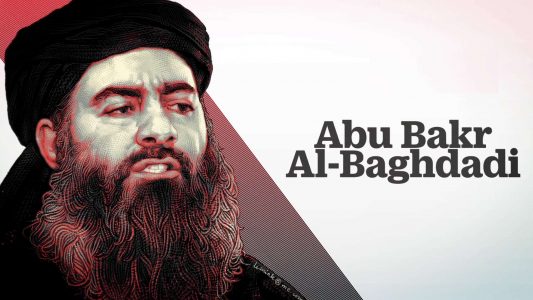
ISIS leader Abu Bakr al Baghdadi has more PR advisors than a Hollywood actor
The footage of Abu Bakr al-Baghdadi chatting casually to his commanders released on Monday was only the second time he has been seen on film since he became the leader of Isis. And like the one that came before, every part of it was carefully stage managed.
“This one was paired back compared to what we have come to expect, but there is no doubt that they will have spent a lot of time thinking about every single thing in that room, the position of everyone in that room, in a way that complements the overarching narrative of that video,” according to Charlie Winter, senior fellow at the International Centre for the Study of Radicalisation and Political Violence.
So what was he trying to say? Answering that question requires a deeper look at where Isis stands today. Last month, the last piece of territory held by the group was captured by the Syrian Democratic Forces, a Kurdish and Arab militia backed by the US and Britain.
The final months of that fight were a gruelling battle of attrition. Die hard supporters of the group went for days without food as their once mighty caliphate shrunk by the day. As they emerged from the small village of Baghouz, the unremarkable Syrian hamlet on the eastern banks of the Euphrates where Isis made its last stand, many of them asked: Where is Baghdadi?
This video, in part, is meant to answer that question. It serves as proof not just of life, but of continuity. The footage shows him digesting various battle plans and strategy documents from his advisors.
“The key message over anything else is that he remains in control of the group. It is to show him as someone who is relevant, someone who has hands on access to day to day affairs of the group, and is not a distant far-away guy living in some cave, hiding from his enemies,” Mr Winter told The Independent.
The content of his speech is also significant. The defeat of the group’s physical caliphate had been on the cards for some years, and throughout that time Isis has undergone something of a rebranding exercise.
At the height of its territorial power, the group’s slick media operation was intensely focused on portraying the caliphate as a kind of paradise for disaffected Muslims around the world. But recently the message has been focused on Isis as a global organisation, a fraternity that stretches beyond borders. There was praise for “brothers” in Libya, Burkina Faso and Mali, an acknowledgement of “92 operations in eight countries” in revenge for Baghouz.
There are more subtle messages in the video too — nods to jihadist tradition. Analysts have noted that the placement of a rifle to his side and his military attire bears a striking resemblance to the output of Abu Musab al-Zarqawi, the founder of the organisation that would eventually become the Islamic State.
All of these details may be lost on normal people, but they matter to the intended audience. And if the initial reaction to the video is anything to go by, it had just the desired effect.
“In the years I have been monitoring Isis supporters, I haven’t seen them this animated in a very long time. This is a really exciting moment for them to see their caliph,” said Mr Winter.
An emboldened army of Isis supporters, scattered across borders, is likely to be of concern to anti-terror agencies around the world.
Source: Independent





